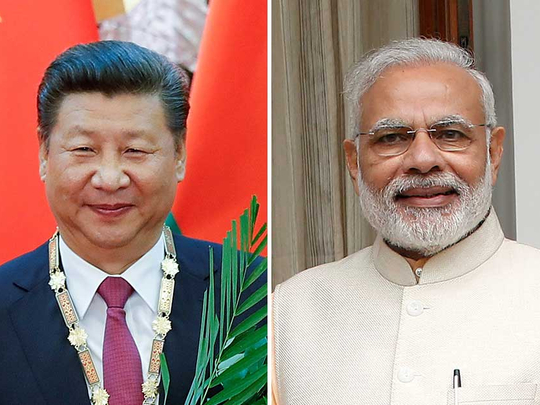
India is set to host China and the other members at the eighth Brics Summit in Goa this weekend; this comes barely six weeks after the two met at the G20 Summit in Hangzhou. Notwithstanding these recurrent summits, relations between the two are beset with suspicion. The Indian media reports regularly on how China is bent on thwarting India, whether to gain entry into the Nuclear Suppliers’ Group or in the proscription of Masood Azhar — the founder of Jaish-e-Mohammad — or by denying India’s rights as a lower riparian state by building a dam on Xiabuqu, a tributary of the Brahmaputra.
This distrust has its roots in the 1962 war that India fought and lost with China but there is a complicated prehistory here: The contentious McMahon Line delineating the boundary between British India and China under the Shimla Treaty of 1914, Chinese annexation of Tibet, in 1950 and subsequently India’s grant of sanctuary to the Dalai Lama in 1959 form the backdrop to the longstanding mistrust between the two.
Over the years, this unease has been overlaid with a sense of rivalry on who will be the pre-eminent power in Asia. The endless debate on India versus China has further fuelled this sense of competition particularly in India though not so much in China. For China does not consider India a worthy rival and is not obsessed as it would seem India is. China’s core interests lie much to the west of it — Taiwan, and its unification with the mainland and the South Pacific in general — and the US is its grand focus. China sees itself as a global power and as much as Tibet and India are important, Beijing’s gaze is focused on its eastern seaboard. India is a side show and the boundary issue and minor eruptions which occur on and off on the contested border are to keep India off balance. China wants to keep this dispute in a state of limbo; perhaps as a bargaining chip for the future because China does not see any immediate benefit in resolving this issue.
Now to hard facts as to why China is not too focused on India. China’s economy is five times that of India’s; in per capita terms, again it is overwhelmingly in favour of China — 4.66 times by the nominal method and 2.20 times in Purchasing Power Parity terms — and between 1981 and 2011, China pulled close to 750 million people out of poverty as against India’s 250 million. China’s military budget dwarfs that of India. It has 250 nuclear warheads to India’s 100, a naval fleet vastly superior to India’s and a genuine triad capability for conducting nuclear warfare through land-based long range missiles, nuclear-armed bomber aircraft and ballistic missile submarines.
Demographic dividend
Despite this, arguments are put forward as to how, in the long run, a democracy will always overtake a socialist republic run by a single party, how China’s growth rates have recently dropped and India’s have spiked, and how India’s so-called demographic dividend — a far younger labour force — will make a huge difference in the race to the top.
There is talk of China’s overdependence on investment driven growth and export-led manufacturing strategy working against the laws of diminishing returns while India’s growth fuelled by domestic consumption and limited dependence on external factors like exports and foreign direct investments will see India pulling ahead.
Similarly China’s state capitalism versus India’s innovative private entrepreneurial capabilities will force the Indian elephant to reverse the trend and leave the Chinese dragon lagging behind. Some of this is feeding into the narrative that India has a great civil society, but a weak state while China has a great state, but a weak civil society. Indeed it is this last claim that goes to the very heart of the debate.
Harvard professor Odd Arne Westad’s book Restless Empire is one of the best guides to this knotty issue and reveals how these facile comparisons lead us astray. Historically, China has a long record of being a unitary state — the longest in history — and it has consciously evolved a national identity that is rooted in the Han Chinese tradition and culture; more than 80 per cent of Chinese identify themselves as being Hans first and Chinese second. It is a monochromatic identity vastly dissimilar to India’s. Indeed, India’s diversity is at once its strength and weakness. Its weak state is unable to forge ahead to advance its national interests. The single-mindedness that China repeatedly exhibits — whether in the social sector or in power projection — is singularly absent in India’s case.
Westad’s very label — Restless Empire — tellingly makes clear the hegemonic aspirations of China. But as in all ambitions, the challenge is from within and how well it can manage its internal dissent — inevitable as its society changes — is the key to its future. India’s ability to stumble through misgovernance and a fairly creditable record of handling civil unrest is not to be scoffed at, but it has a long way to go to catch up with its counterpart. Indeed, some may even ask whether it ever will.
Ravi Menon is a Dubai-based writer, working on a series of essays on India and on a public service initiative called India Talks.












